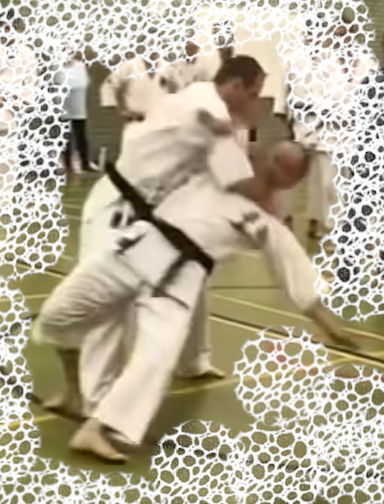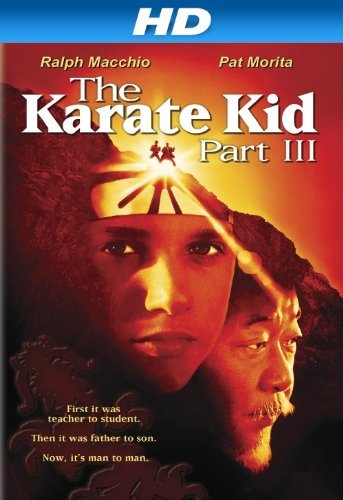Principles Of Motion...

...take precedence over sequence of motion.
"Principles of motion take precedence over sequence of motion", is a quote from Ed Parker, the founder of American Kenpo. I have often wondered about the Japanese term Kuzushi, and what principles I need to apply to my Gojyu/Goju Ryu training in order to make Kuzushi a part of everything I do.
Wikipedia describes Kuzushi as: "(崩し:くずし) a Japanese term for unbalancing an opponent in the Japanese martial arts.
The noun comes from the transitive verb kuzusu (崩す), meaning to level, pull down, destroy or demolish. As such, it refers to not just an unbalancing, but the process of putting an opponent to a position, where his stability, hence the ability to regain uncompromised balance for attacking, is destroyed.
In judo, it is considered an essential principle and the first of three stages to a successful throwing technique: kuzushi, tsukuri (fitting or entering) and kake (execution).
The methods of effecting kuzushi depend on maai (combative distance) and other circumstances. It can be achieved using tai sabaki (body positioning and weak lines), taking advantage of the opponents actions (push when pulled, pull when pushed), atemi (strikes), or a combination of all three."
While this description is informative and somewhat educational, it still doesn't tell me how to apply Kuzushi to my own, and typically, my students training.
According to the glossary of Japanese Terms found at davideaton.com/glossary.html KUZUSHI is defined as; "The unbalancing of an opponent either physically (as in a foot sweep), mentally (as in stepping on an opponent's foot before punching to distract him), or spiritually (as in a fierce kiai just before an opponent attacks to "drain" his fighting spirit)."
Here is a video I found on Youtube, which gives some great examples of Kuzushi.
One day, in early 2019, I was invited to a seminar, by a martial arts Brother, run by Jim Armstrong from http://www.rawcombatives.com.au/. Jim talked about a thing he calls cylinder theory and taught us how to make it work. If I were to try and describe it here, it would be the longest blog post in the history of blog posts and I still wouldn't do it justice. Suffice to say, I know enough about it to make it work, and the people I've shown it to can make it work too.
After learning about, and how to use, cylinder theory, I started looking at my Gojyu training with new eyes. All of a sudden I could see why the more artful practitioners were able to make things look so easy when moving another human being around, against their will. When applying it to "blocks" I realised that a small, almost imperceptible change in the actual process, and a huge shift in the perception of the Uke(receiver) could make a huge difference to the outcome.
Up til now, I'd been "blocking" an attack, back along the same line that the attack was coming, doing what some call jamming. However the success of the Kuzushi, was somewhat hit or miss. I used Hikite to unbalance my opponent, but to do that I had to "block" first, then use the same hand as it pulled back to the hip which, because of the delay, could potentially allow my opponent the opportunity to gain an advantage.
Now back to our opening quote. Principles of motion take precedence over sequence of motion. The motions of my "blocks" are still the same, I have changed nothing of how they are performed, but the principles of the motion are what makes the difference in the end result. Cylinder theory dictates that I should connect to, and or dominate, my opponents "cylinder" with my own. So, now, my blocks, if I'm on the outside will focus energy more toward my opponents centre. If I'm on the inside, and "blocking" outwardly, then I need to strike toward the opponent's centre, regardless of where my block is moving to, and do it almost simultaneous to the "block".
If you want to know more about "Cylinder Theory" contact Jim Armstrong at http://www.rawcombatives.com.au/ or on Facebook at https://www.facebook.com/RawCombatives/
I feel that Kuzushi is a principle that is heavily over looked. It's easy to forget simple principles when you're the biggest, or fastest, etc. but when you're not that, then how do you over come the one who is? Kuzushi! If Kuzushi is foremost in your mind when performing your Kata based drills, then your Kata will take on new life. When your intent is not on beating someone up, but on making it impossible for them to beat you up, Kuzushi will come to the fore...
Once you develop an understanding of how to apply or affect Kuzushi from your first move, everything after that is a bonus. That's when Hikite comes into its own. Not as a way to add power to the punch, it doesn't any way, but as a means of manipulating and unbalancing - Kuzushi - your opponent, beyond that which you've already done.
In Gichin Funakoshi's book Karate Jutsu, he wrote “Hikite is to use the opponents incoming punch and pull on it beyond its reach and to twist it at the same time, to throw the opponent off his balance." To cause your opponent to lose balance is the very essence of Kuzushi.
Often times I think that the loss of Kuzushi from what we karate ka do is down to the focus placed on drills taken from our Kihon (Basics) Kata. They are predominately practised at a distance that promotes the confidence, in new or junior practitioners, to be able to perform each technique in a fundamentally correct manner. These are practised in a straight line moving back and forth keeping equidistant spacing, with no other intent than to get the motions and the techniques right. The down side to this is, if that becomes your focus, you can quite easily forget the stuff that will make a difference in a physical altercation. Just lately, from what I've seen, it's more about the speed than the correct technique... Then the practioner thinks because they are fast, that their techniques will be effective in a real fight. Then because of the distace used in those drills, we start to practise other drills based on more advance Kata, but we do it in the same way, which means both Uke and Tori are in a continual state of balance and they both miss out on the Kuzushi practice.
When discussing Kuzushi, and explaining it to someone new to the idea, I like to quote Thomas Ian Griffith, who played Terry Silver in  “The Karate Kid III” (1989) when he said, “A man can't stand, he can't fight.” Obviously, my intent is different to the movie character as his intent was for his student, Daniel, to smash his opponents legs, in order to win. That's not what Karate is about. Basically, my intent is to move my opponent to a position where he has no balance, and then to make sure that he can not find that balance, so that I can press what ever advantage I have in order to not lose. In the Meibukan System of Gojyu Ryu, Karate is not about winning. It's about NOT losing.
“The Karate Kid III” (1989) when he said, “A man can't stand, he can't fight.” Obviously, my intent is different to the movie character as his intent was for his student, Daniel, to smash his opponents legs, in order to win. That's not what Karate is about. Basically, my intent is to move my opponent to a position where he has no balance, and then to make sure that he can not find that balance, so that I can press what ever advantage I have in order to not lose. In the Meibukan System of Gojyu Ryu, Karate is not about winning. It's about NOT losing.
While "Kuzushi" is a concept or a principle for those of us in the West, it is a very real thing and is referred to as a noun when talking with Japanese people and especially those who study Judo. For them it is the point on the attackers body where the balance is weakest. Which ever way you look at it, try adding Kuzushi to your training, and especially your partner training.
I am a huge fan of questioning everything.
Thanks For Reading, Please Feel Free To Leave Comments Good Or Bad.
Just Remember To Keep Them Civil With No Profanity.